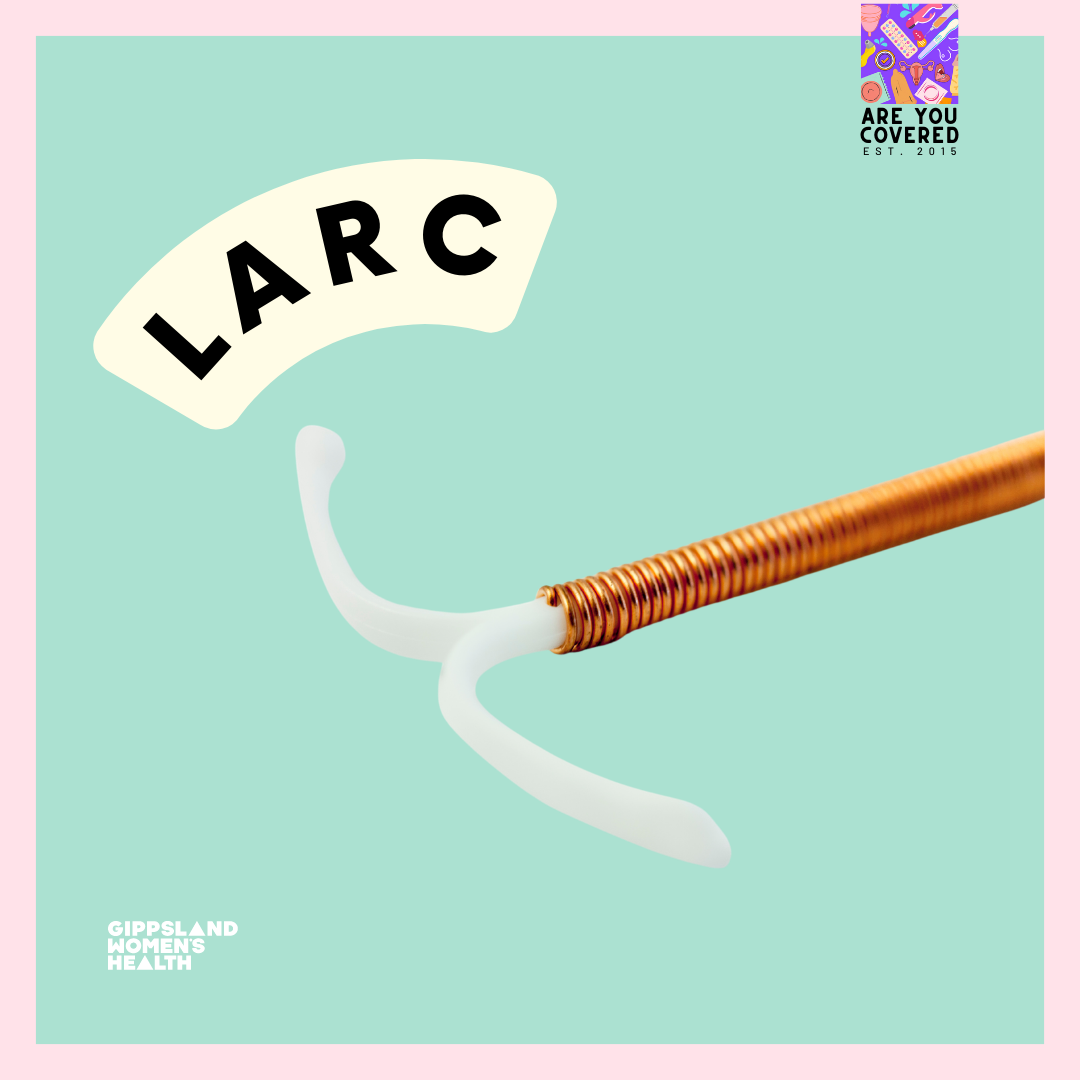In this article, learn about:
- What LARC means and the various types of LARC
- The Benefits of LARC
- How you can get LARC
- Side effects of LARC
What is LARC?
LARC stands for Long Acting Reversible Contraception.
There are two types of LARC that will stop you from getting pregnant for a number of months or years:
- A contraceptive implant (Implanon NXT) that is placed under the skin of your arm that can last for up to three (3) years.
- An IUD (intrauterine device) which is placed inside the uterus, and can last from 5 – 10 years.
These devices are both 99% effective at preventing pregnancy and can be removed when you no longer want to use them anymore.
Contraceptive Implant
The contraceptive implant (also known as ‘the rod’, sold as Implanon NXT in Australia)
- Is a 4cm-long flexible plastic stick
- Works by slowly releasing the progestogen hormone into your body.
- Progestogen is similar to the hormone produced by the ovaries.
- Stops the ovaries from releasing an egg each month, and prevents sperm from entering the uterus/womb by thickening the fluid around the cervix.
The Two Types of IUD
The hormonal IUD is a small ‘T-shaped’ plastic device and have a coating (membrane) that controls the slow release of progestogen into the uterus. In Australia, hormonal IUDs are sold as Mirena and Kyleena.
The non-hormonal copper IUD is a small plastic device with copper wire coiled (wrapped) around the frame.
IUDs work by:
- Changing the lining of the uterus, making it difficult for a fertilised egg to stick to the lining to start a pregnancy.
- Thickening the fluid around the cervix, preventing sperm from entering.
The Benefits of LARC
- Effective, low cost options that last for an extended amount of time
- You don’t have to remember to use contraception every day or each time you have sex – making them excellent options for teenagers and young adults!
- No interference with sex
- Can be used while breastfeeding
- Once an IUD or implant is removed, fertility returns quickly
- They are discrete – no one can see that you are using a LARC
Remember: LARC do not prevent STIs, so always remember to wear a condom!
How do I get a LARC?
All types of LARCs can be inserted or implanted by trained doctors, nurses and gynaecologists. The hormonal IUD is inserted surgically, and is generally completed as a day procedure.
Speak to your doctor!
To find out if a LARC is suitable for you – and to work out which option is best for your body – speak to your doctor or sexual and reproductive (SRH) nurse first. They will be able to discuss your options and can help to make an appointment for inserting an IUD or contraceptive implant.
Side effects of LARC
Contraceptive Implant
- Some users may experience bruising and tenderness on the arm when it is first inserted and after it is removed, which may last for up to a week. A small scar can also develop at the site of insertion / removal.
- Wearing a bandage over your arm for 24 hours helps reduce bruising and tenderness.
- Period patterns will change. It might be more often and/or irregular (at different times).
- Around 20% of people using the implant will have no bleeding at all (this is not harmful to the body).
- Around 20% of people have frequent or prolonged bleeding which may get better with time. Some medications can help with this bleeding, speak to your doctor or nurse for more information.
- It is also possible to experience the following symptoms, which will often settle with time:
- headaches
- changes to your skin
- sore/ tender breasts
- mood changes
IUD
- After IUDs are first inserted, some users have period type cramping that will often settle after several days.
- Your period patterns will change – it is common to experience spotting or frequent bleeding in the first 3 – 6 months.
- For the copper IUD, most users experience periods that are 50% heavier.
- The IUD can fall out, which is more common in the first three (3) months of it being inserted.
- Headaches, changes to your skin, sore/tender breasts and mood changes are common with the hormonal IUD.
- In about 1 in 500 users, the doctor or nurse makes a small hole in the wall of the uterus (womb) while inserting the hormonal IUD. The IUD can move through the hole and sit in the wrong place. You would then need keyhole surgery to have it removed.
- Around 1 in 300 users get an infection when the hormonal IUD is first inserted. This is usually successfully treated with antibiotics.
To find out more about LARC, including reasons why this option may not be right for you, visit: Sexual Health Victoria – https://shvic.org.au
Source: Sexual Health Victoria



